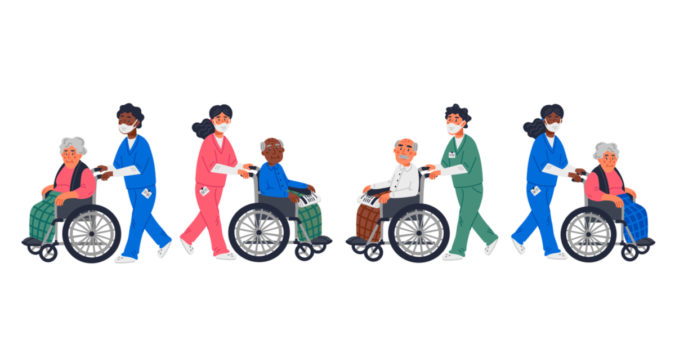One of the many unspoken stories of the coronavirus pandemic is its impact on nursing homes.
An astonishing share of COVID-19 deaths in the U.S. have occurred in long-term care facilities, and there are signs that many such institutions have failed to adequately protect their residents.
The New York Times estimates that more than a third of all coronavirus deaths in the U.S. have been nursing home residents or workers. Other estimates put the figure closer to 43%. For comparison, only about 4.5% of Americans live in nursing homes.
The exact number of deaths is still unknown, as many states do not disclose where and how deaths occurred. And because many long-term care homes are privately owned, the fatalities may actually exceed reported data.
According to the Washington Post, COVID-19 infections have already been confirmed in more than half of the country’s 15,000 nursing homes. And in 15 states, more than half of all COVID fatalities were among people who lived or worked in nursing homes.
How is it that nursing homes, which are supposed to have safety and medical standards for protecting patients, have become focal points for the disease?
A Bad Situation Made Worse
Many nursing homes were suffering from substandard care and chronic understaffing even before the coronavirus hit. In a recent opinion column, the editorial board of the Washington Post placed the blame on exactly that.
The pandemic has only worsened the problem while highlighting all the ways long-term care facilities have failed to live up to patient and family expectations.
Government officials have also largely overlooked nursing homes in the allocation of critical healthcare resources and equipment, opting instead to aid hospital workers and first responders. Washington Post’s editorial board wrote:
“While most nursing homes barred their doors to families, vendors and other outsiders from the start of the pandemic, the virus spread nonetheless, perhaps owing to the facilities’ staff, who often had no access to testing or masks and other basic safety equipment.”
The Post also went on to argue that nursing homes should be prioritized in states where testing supplies are in short supply.
With ongoing and evolving risks to the nation’s elderly care facilities, agencies have begun ramping up their responses.
Earlier this month, the U.S. Department of Labor issued new workplace guidelines for nursing homes. California is now ordering universal testing for all residents and staff members of nursing homes in the state. Some states, such as New York, are considering laws that would force nursing homes to draft and publish plans for future pandemics.
Anger Brewing
Time will tell how effective these efforts will be, especially this late into the outbreak. In the meantime, it should come as no surprise that people are angry.
Families of nursing home patients are especially justified in their outrage. With good reason, they’ve accused many homes of falling to protect residents from the outbreak. Some have already taken legal measures against certain facilities, and the industry as a whole is anticipating a flood of lawsuits in the coming months.
Adding fuel to the outrage fire, some states have passed laws shielding nursing homes from legal liability. While those protections are by no means comprehensive, their swift passage in 15 states draws questions about who lawmakers are really working for.
“They can’t just shrug their shoulders and say, ‘It’s a pandemic,’” a New York woman who plans to sue a nursing home in Long Island told the New York Times. “There has to be accountability.”
Regardless of who or what is to blame for the virus’s disproportionate toll on the elderly, it is clear that nursing home patients throughout the country have been subject to neglect, harassment, and exploitation even before the COVID-19. The harm levied during this outbreak is, unfortunately, not entirely new.
